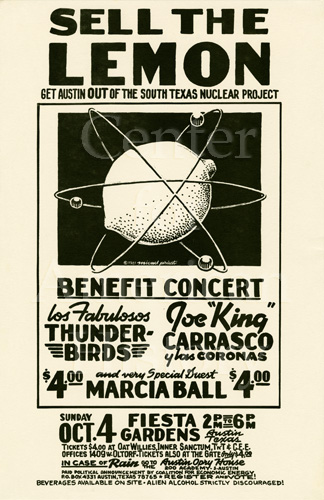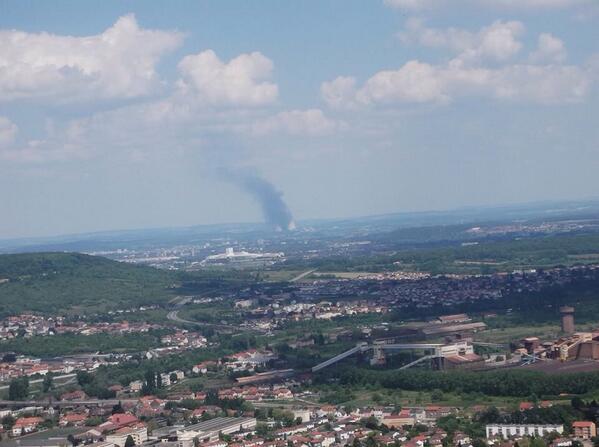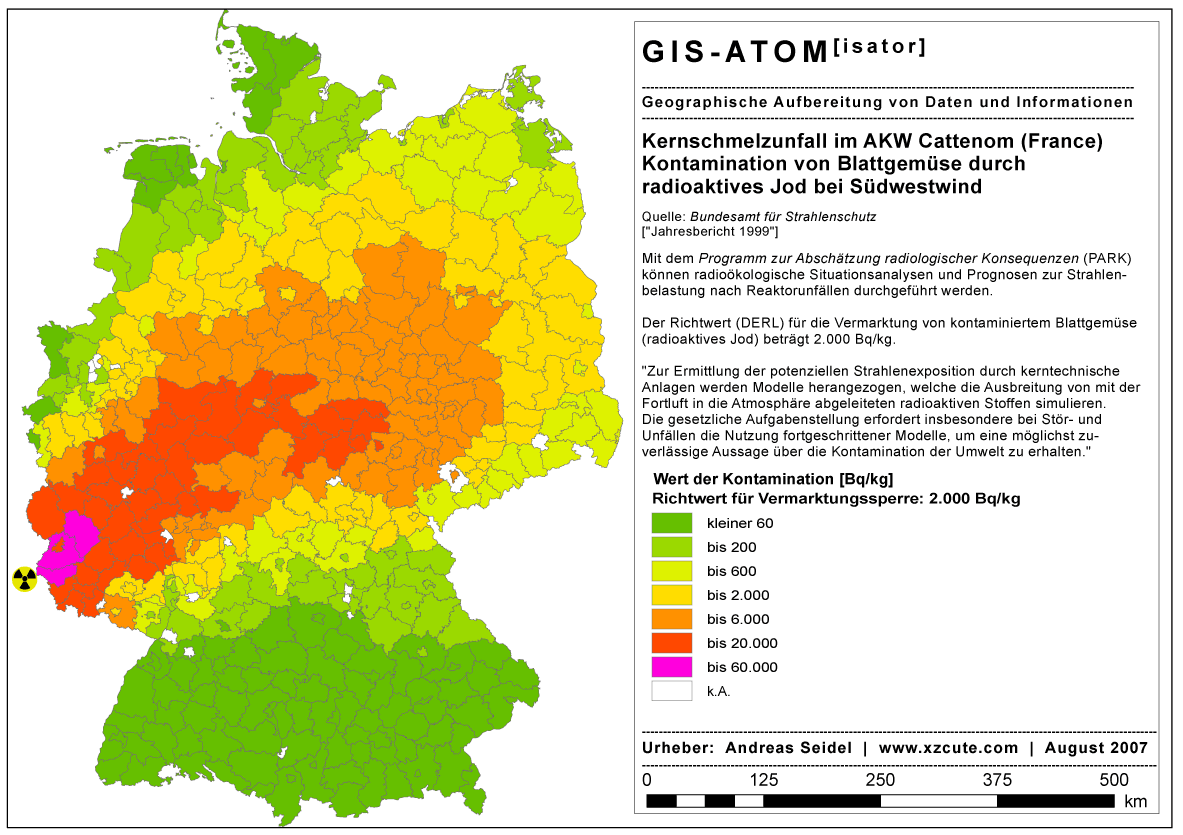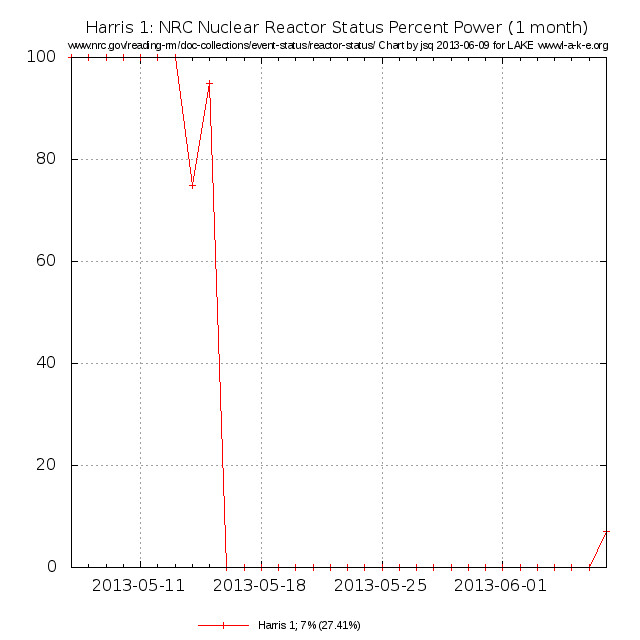Not just
EDF and Calvert Cliffs
that would be enabled by
the current NRC rule-changing comment period.
 In April
NRC denied a license to NRG and Toshiba Corp. (aka Nuclear Innovation North America, or NINA)
for two new reactors at the South Texas Project nuclear facility outside Bay City;
the same facility where STNP 2
http://www.l-a-k-e.org/blog/2013/01/fire-in-texas-nuclear-reactor.html
had a fire in January.
The reason for denial was the same as for EDF and Calvert Cliffs: Continue reading
In April
NRC denied a license to NRG and Toshiba Corp. (aka Nuclear Innovation North America, or NINA)
for two new reactors at the South Texas Project nuclear facility outside Bay City;
the same facility where STNP 2
http://www.l-a-k-e.org/blog/2013/01/fire-in-texas-nuclear-reactor.html
had a fire in January.
The reason for denial was the same as for EDF and Calvert Cliffs: Continue reading
Category Archives: Safety
NRC to change nuke foreign ownership so EDF can fire up Calvert Cliffs?
 The NRC “upheld” license denial for the Calvert Cliffs nuke
with its fingers crossed, the very same day
directing staff to look into changing the requirement
by which it just ruled.
A requirement against majority ownership by a foreign firm,
in this case
Électricité de France (EDF),
whose flagship Cattenom reactor
caught on fire a week ago with smoke seen from miles away;
two people died at Cattenom in February.
You can comment on NRC’s proposed changes to let EDF
fire up Calvert Cliffs
online or in person June 19th in Maryland.
The NRC “upheld” license denial for the Calvert Cliffs nuke
with its fingers crossed, the very same day
directing staff to look into changing the requirement
by which it just ruled.
A requirement against majority ownership by a foreign firm,
in this case
Électricité de France (EDF),
whose flagship Cattenom reactor
caught on fire a week ago with smoke seen from miles away;
two people died at Cattenom in February.
You can comment on NRC’s proposed changes to let EDF
fire up Calvert Cliffs
online or in person June 19th in Maryland.
 The same day
the NRC upheld denial of a license, 11 March 2013,
the same Commission
The same day
the NRC upheld denial of a license, 11 March 2013,
the same Commission
“directed the staff to provide a fresh assessment on issues relating to FOCD including recommendations on any proposed modifications to guidance or practice on FOCD that may be warranted.”
And the issue with Calvert Cliffs was that very same “foreign ownership, control, or domination (FOCD) of commercial nuclear power plants.”
This explains why Continue reading
Farley 1 reactor tripped
Nuclear reactor Farley 1,
about 125 miles from here tripped off its Reactor Coolant Pump Buses yesterday.
 They plan to get around to informing the press about it real soon now;
they didn’t even tell the NRC until today.
Maybe somebody would like to call Farley and ask what’s going on?
“The Farley plant resident inspectors can be reached by calling 334-899-3386.”
Maybe ask them what caused
all those other downtimes at Farley over the years; maybe also about Browns Ferry and Hatch,
where new Resident Inspector Phillip Niebaum previously worked.
Southern Company CEO Thomas A. Fanning
asked us to look at SO’s safety record.
They plan to get around to informing the press about it real soon now;
they didn’t even tell the NRC until today.
Maybe somebody would like to call Farley and ask what’s going on?
“The Farley plant resident inspectors can be reached by calling 334-899-3386.”
Maybe ask them what caused
all those other downtimes at Farley over the years; maybe also about Browns Ferry and Hatch,
where new Resident Inspector Phillip Niebaum previously worked.
Southern Company CEO Thomas A. Fanning
asked us to look at SO’s safety record.
NRC Current Event Notification Report for June 12, 2013,
Event Number: 49106:
Notification Date: 06/12/2013
Notification Time: 01:33 [ET]
Event Date: 06/11/2013
Event Time: 21:05 [CDT]UNIT 1 AUTOMATIC REACTOR TRIP DUE TO THE LOSS OF A START-UP TRANSFORMER
“This is a report of an automatic RPS actuation and automatic ESF actuation per 10CFR50.72(b)(2)(iv)(B) and 10CFR50.72(b)(3)(iv)(A). Additionally, this is to report intentions for a press release per 10CFR50.72(b)(2)(xi).
“At 2105 CDT on 6/11/13, Farley Unit 1 experienced an automatic reactor trip from 100% power. The initiating event was the loss of the 1B Start up Transformer which resulted in de-energization of the B-Train ESF 4KV buses and the 1B and 1C Reactor Coolant Pump Buses. The 1B Emergency Diesel Generator auto started and tied to the B-Train 4KV Emergency buses.
“Both MDAFW Continue reading
Korean nuke supplier for Plant Vogtle forged documentation for “a host of nuclear reactors”
Korea’s Doosan supplied that
that train-wrecked Plant Vogtle reactor vessel later
left unprotected sitting at Savannah port,
 as well as parts for more than a dozen U.S. reactors.
And Doosan, according to the Korean government,
forged documentation that just shut down “a host of nuclear reactors”
in Korea, whose Prime Minister said,
as well as parts for more than a dozen U.S. reactors.
And Doosan, according to the Korean government,
forged documentation that just shut down “a host of nuclear reactors”
in Korea, whose Prime Minister said,
“Those found to be involved in wrongdoing or corruption must be sternly punished by the law, regardless of their rank and status.”
According to World Nuclear News 5 June 2008, Doosan awarded further contract by Westinghouse, Continue reading
The wind from the Cattenom nuke in France blows into Germany
From France to Berlin is as close as 32 nuclear reactors to here. Here’s a scenario for “Core meltdown accident in the nuclear power plant Cattenom (France) contamination of leafy vegetables by radioactive iodine with wind from the southwest”:
I was in Germany shortly after Chernobyl, when all the cows were inside so they would not eat the radioactive grass, and all the salads were frozen.
Here’s a scenario for radioactive iodine in mother’s milk, with a similar map: Continue reading
Harris nuke flaw “fixed” that wasn’t found for a year
Less than 500 miles from here in NC,
what else haven’t they found if
 ‘Duke Energy’s examination a year ago “was supposed to have found that problem then and fixed it”‘?
This was a ‘a quarter-inch spot the NRC and the company describe as a “flaw” in the reactor vessel head, which contains heat and pressure produced by the nuclear core’s energy.’
When a solar panel has a quarter-inch flaw, you get a tiny percentage less electricity,
not the risk of radiation leak or worse.
Would you rather have two more nukes at the same site, run by the same company that can’t run the one it’s got safely, or solar power instead?
‘Duke Energy’s examination a year ago “was supposed to have found that problem then and fixed it”‘?
This was a ‘a quarter-inch spot the NRC and the company describe as a “flaw” in the reactor vessel head, which contains heat and pressure produced by the nuclear core’s energy.’
When a solar panel has a quarter-inch flaw, you get a tiny percentage less electricity,
not the risk of radiation leak or worse.
Would you rather have two more nukes at the same site, run by the same company that can’t run the one it’s got safely, or solar power instead?
Plus where is the advantage of baseload capacity when Harris 1 has only been up 27.41% for the past month (NRC data), which is hardly better than the approximately 20% sun hours per day for solar power in North Carolina this time of year. Given the low and continually-dropping cost of solar panels, Duke could simply over-provision distributed solar panels and get way more than 20% or 27.41% effective power, and get that on budget and on time.
Emery P. Dalesio wrote for AP yesterday, Harris nuclear plant in U.S. is safe to restart after reactor problem found, Continue reading
Fire at nuclear reactor in France
Not just for Plant Vogtle anymore: this nuclear reactor site fire was at one of EDF’s flagship plants at Cattenom, Lorraine, France, on the Moselle River.
ENENews quoted MarketWatch yesterday, Photo: “Fire broke out at nuclear reactor” — “Plumes of black smoke could be seen from a considerable distance”
French state-controlled power group Electricite de France SA said Friday a fire started on a transformer at its nuclear plant in Cattenom, eastern France, adding that it was outside the nuclear-processing area.
A picture tweeted from France: Continue reading
Birds stop cleanup work at closed Hanford plutonium plant
Birds nested using radioactive mud from WW II-era nuclear bomb production plant,
 stopping attempts to clean up some of the worst leaking atomic waste,
much of which is liquid in leaking tanks near the Columbia River.
We have nuclear plants leaking radioactive tritium next to the Chattahoochee
and Altamaha Rivers, and radiation is detectible in the Savannah River
near Plant Vogtle.
How many radioactive solar panels or windmills have you heard of?
stopping attempts to clean up some of the worst leaking atomic waste,
much of which is liquid in leaking tanks near the Columbia River.
We have nuclear plants leaking radioactive tritium next to the Chattahoochee
and Altamaha Rivers, and radiation is detectible in the Savannah River
near Plant Vogtle.
How many radioactive solar panels or windmills have you heard of?
 Annette Cary wrote for the Tri-City Herald yesterday,
Birds at Hanford vit plant spread contaminated waste,
Annette Cary wrote for the Tri-City Herald yesterday,
Birds at Hanford vit plant spread contaminated waste,
Continue readingWork stopped Wednesday morning at parts of the Hanford vitrification plant after radioactive contamination was detected under a bird’s nest, according to Bechtel National.
The contamination is suspected of coming from mud used for the nest, which may have belonged to a swallow, said Bechtel spokesman Todd Nelson. Only a small amount of contaminated soil was found, and the contamination was at a low level.
UK biomass plant exploded from Waycross wood pellets
Explosions in Tilbury, England, explosions in Waycross: south Georgia wood pellet dust blowing up here and there and producing CO2 when burned there. Why is “the world’s largest wood pellet plant” a better use of Georgia foresters’ resources than solar farms, which don’t pollute and don’t explode?

A massive fire raged inside wood pellet silos for RWE’s Tilbury Power Station in Essex, UK, on February 27, 2012. The biomass incinerator—the largest in the world at 750 megawatts—had just been converted from coal to woody biomass a month earlier. RWE claims no single cause can be attributed to the fire, but suspects that smoldering wood pellets triggered the dust fire.
 In a recent editorial (apparently not online),
Robert Farris
Executive Director of the
Georgia Forestry Commission,
wrote that Georgia has nine wood pellet plants.
He didn’t name them, but
Biomass Magazine has
a list of U.S. wood pellet plants,
including these in Georgia (I added the City column): Continue reading
In a recent editorial (apparently not online),
Robert Farris
Executive Director of the
Georgia Forestry Commission,
wrote that Georgia has nine wood pellet plants.
He didn’t name them, but
Biomass Magazine has
a list of U.S. wood pellet plants,
including these in Georgia (I added the City column): Continue reading
Owners want out of uranium enrichment company
 Maybe Southern Company and Georgia Power should listen to Urenco’s owners:
the nuclear industry is flatlining after Fukushima.
Maybe Southern Company and Georgia Power should listen to Urenco’s owners:
the nuclear industry is flatlining after Fukushima.
Stanley Reed wrote for Dealbook.Nytimes.com 27 May 2013, Powerhouse of the Uranium Enrichment Industry Seeks an Exit,
Continue readingThe company that operates this uranium enrichment center, Urenco, is the world leader in the field. It is also plumply profitable. So why are its owners eager to sell it?
The answer, as with many things involving nuclear power, is a combination of economics, geopolitics and the Promethean prospect of an energy source that is as potentially green and abundant as deadly dangerous….


